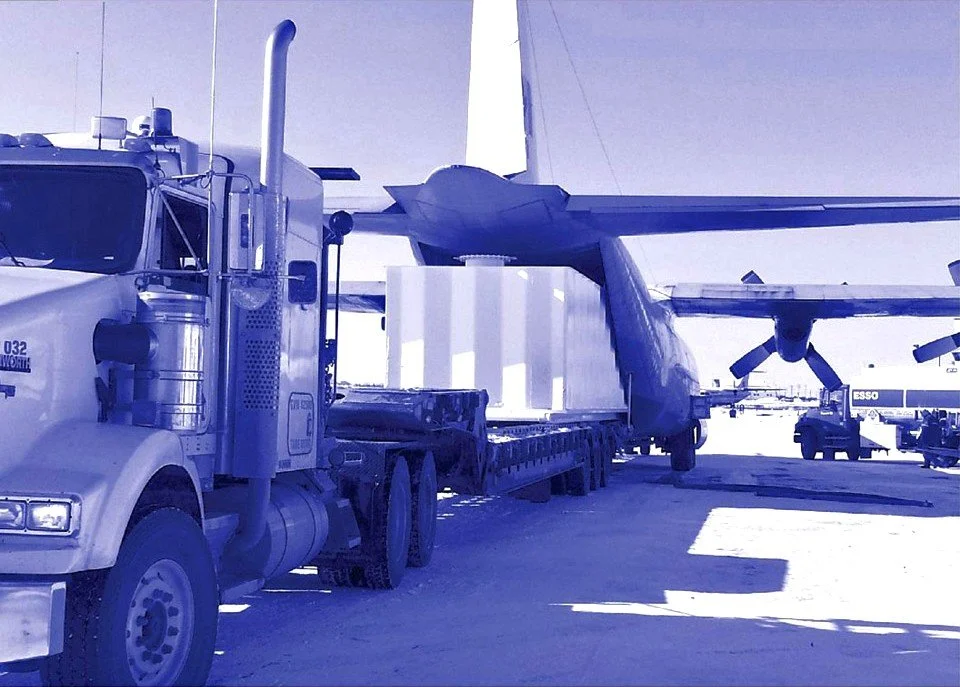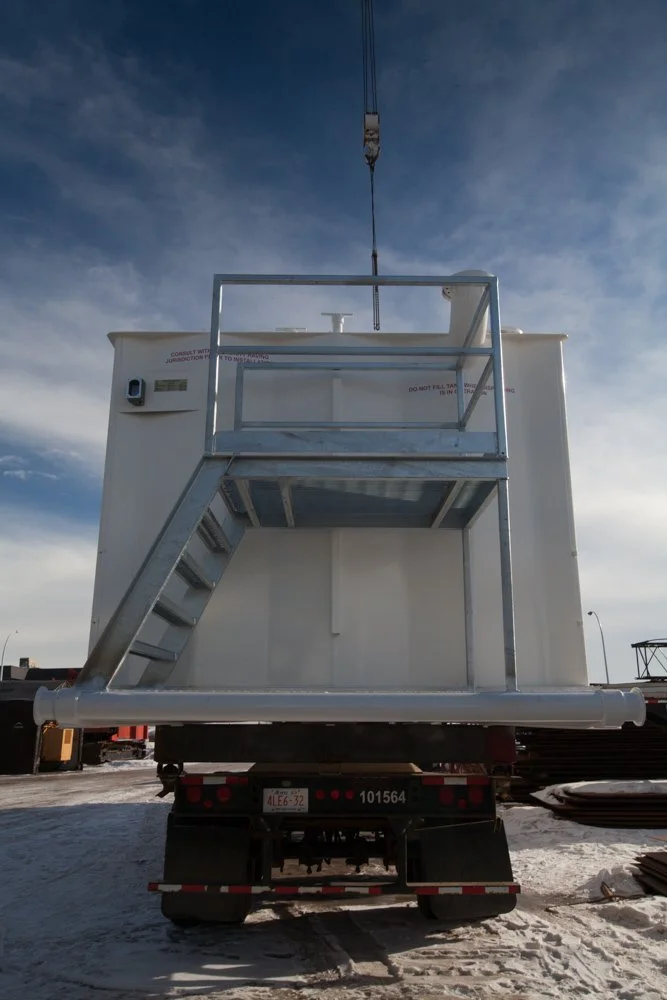Brutally Tough™
Gem Steel designed the Brutally Tough™ tank to solve the pervasive issues of using round, horizontal containers at remote northern sites (like Baffin Island and Ekati Mine). While standard cylindrical tanks are difficult to move and require concrete foundations, the ULC-certified rectangular design delivers superior durability, streamlined logistics, and simplified site setup.
Design & Safety
ULC-S601.07 Certified (Tested & Certified)
Sizes ranging 20,000L up to 100,000L
Single wall or integral Double Wall containment
1/4" steel plate walls standard
Pump and dispensing system options
Features corrugated walls for superior strength.
Includes two man-ways for easy interior inspection and coating.
Transport & Site Advantage
Hercules Transportable (Tested to 70,000L transport)
Rigid design prevents twist or bend during lifting and transport
Requires minimal base preparation (just flat, level ground)
Convenient hauling dimensions for highway and mobile use
Greater volume per square foot of floor space
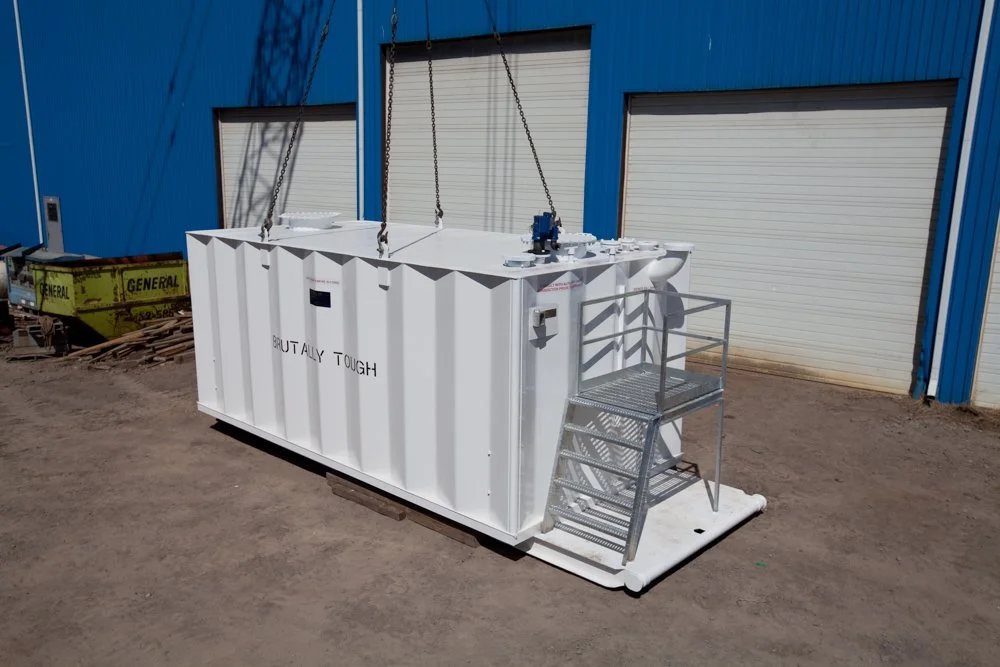
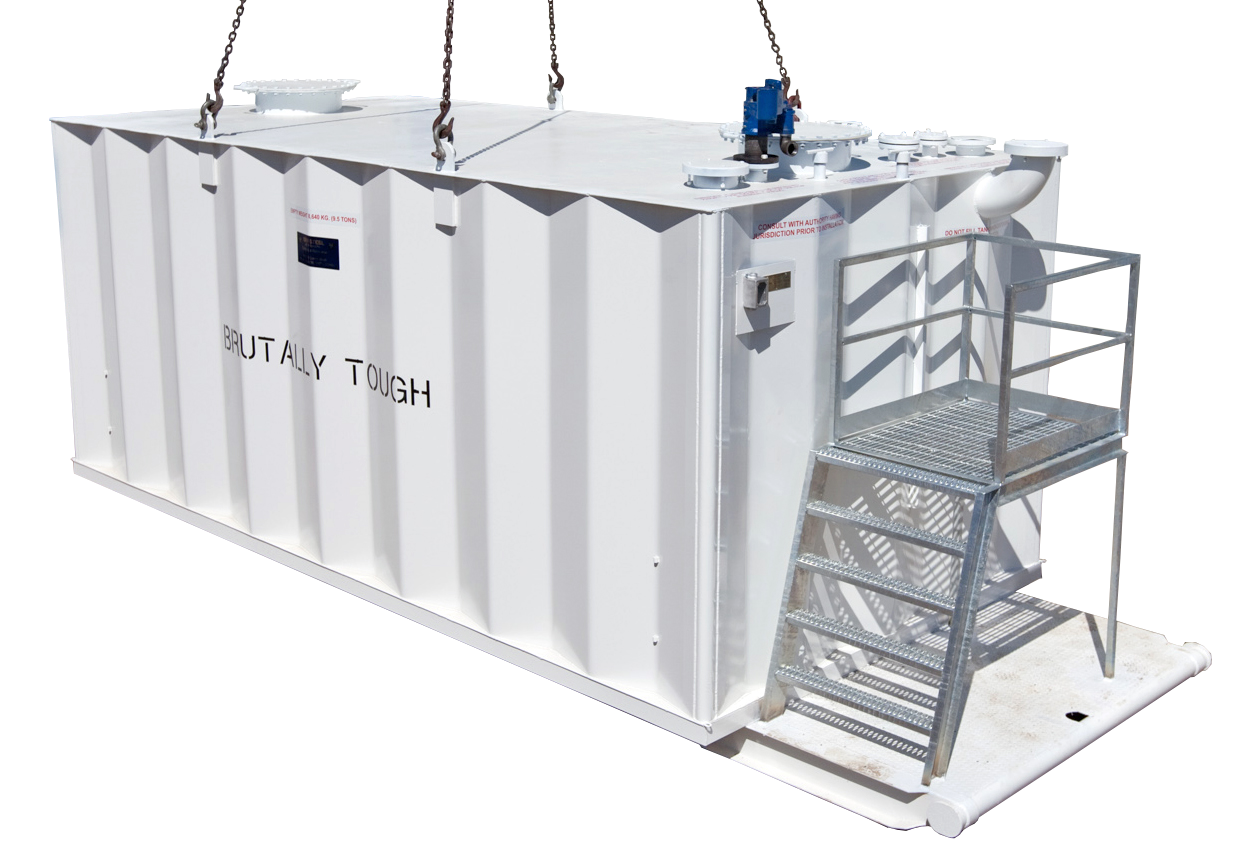
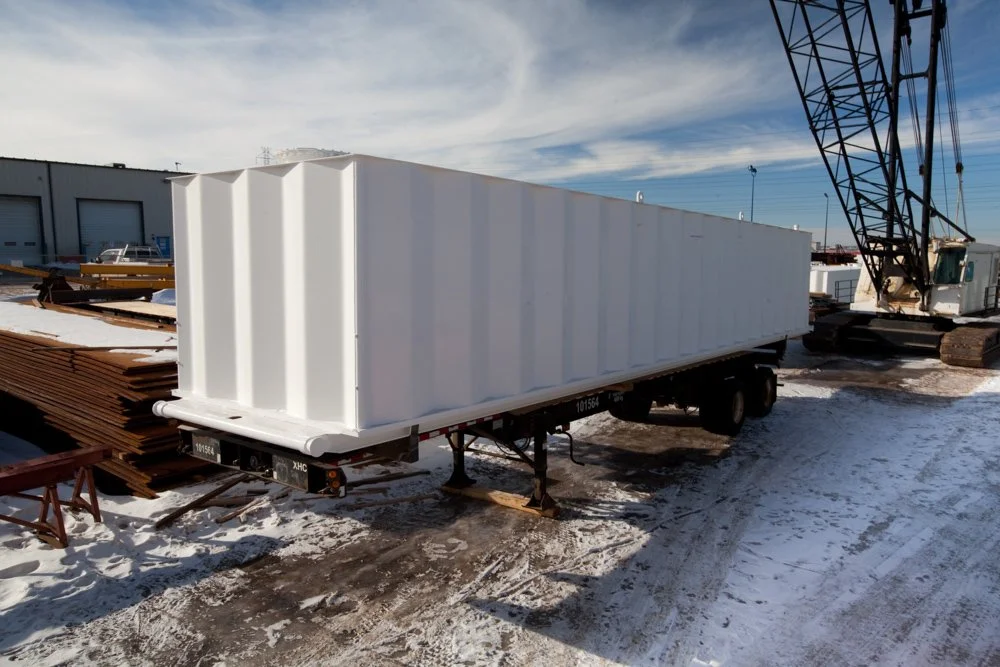
AS FEATURED: The Brutally Tough™ Story
With its new Brutally Tough™ tanks, you could say Gem Steel Edmonton Ltd. is thinking inside the box. The Alberta fabricator's recently launched rectangular, aboveground steel tanks can store up to 100,000 liters of fuel, water, recovered waste or other liquids.
Brutally Tough™ (tested and certified to ULC-601-07) tanks are poised to challenge round, horizontal containers that, until now, have pretty much been standard issue when it came to small-to-mid-sized tanks used in various resource locations. Gem Steel Owner and President Brad Gemmer is confident that.
At a given site, the round, horizontal tanks commonly had temporary and semi-permanent uses. It was not unusual for such tanks to be moved. Whether coming or going, in the North, cranes were seldom available and that would pose a challenge to the move. Improvised, ragtag lifting alternatives—dozers, forklifts, loaders—often were pressed into action, which would often take a toll on the tanks.
Furthermore, the rounded, horizontal tanks needed to rest on a secure base—preferably a concrete slab. Since concrete is not usually available, the bases at remote sites were often improvised, and seldom adequate. In addition, the bases, which were usually constructed in the winter, changed when they began to thaw, so that the formerly supported tank no longer had proper support.
“I saw a real deficiency in what was available as no one was making tanks with the rigour to be moved multiple times and positioned on less than ideal support,” Gemmer explains. Gradually, he moved toward squaring the circle, including developing the special equipment to corrugate large, heavy-steel sheets.
The first version of the Brutally Tough™ tank, which has a patent pending, rolled out from Gem Steel’s southeast Edmonton fabrication yard in March. Besides its rectangular shape, what sets the Brutally Tough™ tanks apart from their cylindrical competition are their 1/4” corrugated-steel walls.
Corrugation not only gives Brutally Tough™ added strength but means less weight and a better weight-to-capacity ratio than its
the Brutally Tough™ tanks will live up to their name from an integrity standpoint, as well as when it comes to ease of handling, transportation and durability, particularly when used in harsh and remote surroundings.
In business for 30 years, Gem Steel has long specialized in building large, permanent field-erected storage tanks at many resource development sites. Its huge tanks—100,000-barrel (20,000,000-litre) and larger—form a significant part of the northern resource landscape from Alaska to Baffin Island and are associated with all of the major mine
names such as Echo Bay - Lupin, Diavik, Ekati and Snap Lake.
While travelling in the North, Gemmer became aware of the widespread use of smaller, horizontal liquid-containment tanks. Even though his company also built a few of these cylindrical tanks, the steel-fabrication veteran felt that, for the most part, such vessels had many shortcomings and especially lacked robustness. Generally, the tanks were not well suited for harsh environments, such as remote exploration camps, or the need for frequent relocations.
“Moving a rectangle is a breeze, positioning it is a breeze and handling [it] can easily be done by virtually any piece of equipment available.”
competition. The 70,000-litre special order, Hercules-transportable version of the Brutally Tough™ tank weighs 19 tons. The reduced weight and the rectangular shape also facilitates hauling by truck.
In fact, Brutally Tough™ tanks, although much stronger, look very much like intermodal shipping containers transported by sea and rail, or hauled by semi-trailer truck. Brutally Tough™ tanks' rigid design will not bend or twist while transported or lifted, and is of similar strength to a railroad bridge.
With its flat bottom, Brutally Tough™ tank needs no fancy base preparation, just that different from placing a container on. Moving a rectangle is a breeze, positioning it is a breeze and handling it can easily be done by virtually any piece of equipment available," says Gemmer.
Brutally Tough™ tanks are available in sizes starting at 10x10 feet, 20,000-litre and up to the largest, 10x50 feet with 100,000-litre capacity. Single-wall and contained (double-walled) versions of the ULC-S601-07 certified tanks are available. The double tank offers added reliability against leakage, an especially important feature legislated in most locations in Canada.
The rectangular configuration facilitates access via two man-ways on the flat top, which makes it easier to inspect the interior for corrosion or to apply coatings and linings.
The flat surface also provides an effective platform for valves, gauges and dispensing systems, which can be installed or serviced without the need for special fall-arrest devices.
Gemmer takes satisfaction in having “produced a pretty tough tank that will relieve users of worries about just about every aspect of managing storage of fuel and other liquids.”

